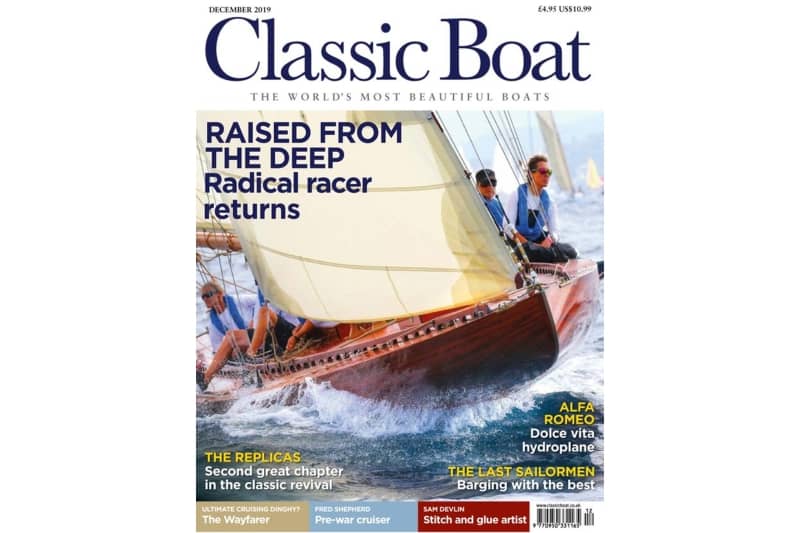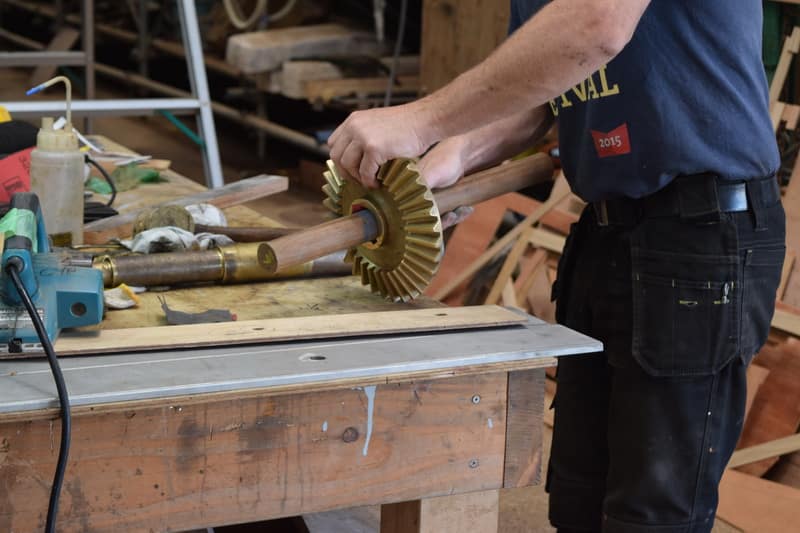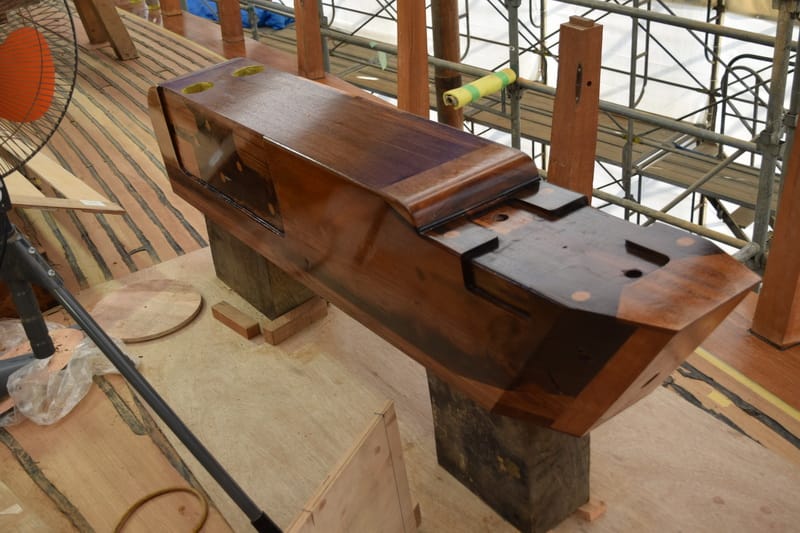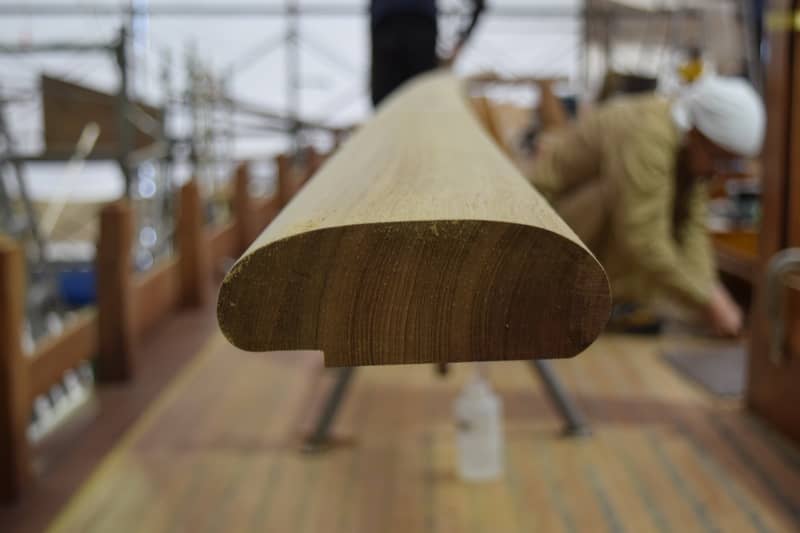
Blog — Friday, 6 December, 2019
Work on the Cynara’s wiring continues. In most parts of the world, the crews working on boat maintenance—the shipwrights, carpenters, engineers, painters, varnishers, and electricians—usually try to work at staggered times, so that they’re not in each other’s way. However, shipyard trades tend to overlap, especially on old ships. Also, this restoration is an extreme case because the work is being done not in a fully fitted shipyard, but at a marina with no onsite trades and services at hand. With deadlines looming, the crews on Cynara often have to share time and space, which means working together to avoid clashes. It’s like a well-choreographed dance at times.
On Monday, Lewis and Hashimoto spent time discussing the right color adjustments on the interior to match the tone and texture of the original mahogany. Lewis has been repeatedly retouching and testing colors in a time consuming, but smoothly running operation.
On the deck, Murata and Shibano have been carefully varnishing all the woodwork on the hatches. The deck has yet to be sanded down, so the caulking is still very visible. It’s interesting to imagine what it’s going to look like when that’s been done.
Also on Monday, Mattis and Richard were installing the capping rails, which still had square corners. On Tuesday, they began forming them into their finished state. By Friday morning, they all had been sanded down and transformed into their gorgeous, silky smooth C shape.
After discussions between the electrical engineers and Paul and Ben, it was decided to remove the pre-installed walls, to speed the wiring process in the long run. Since then, things have been progressing more quickly.
The amount of varnishing work has increased, but there is still work being done on the masts.
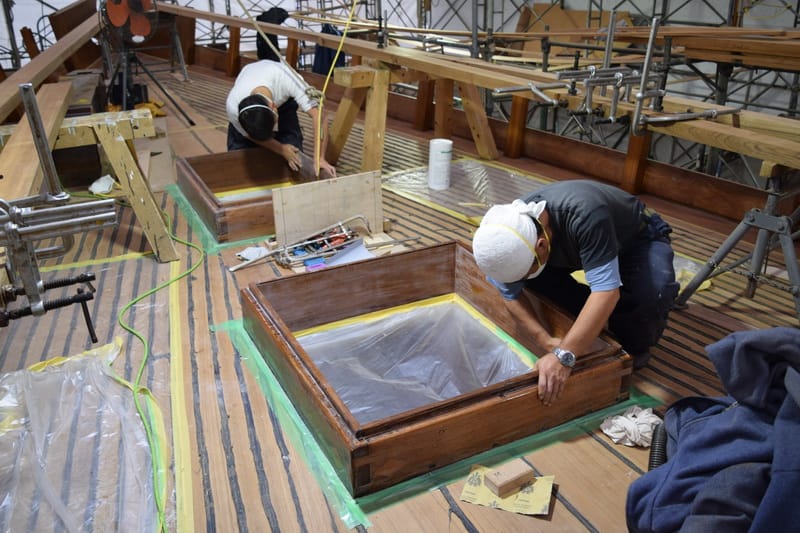
Japanese crew varnishing the details on the deck.
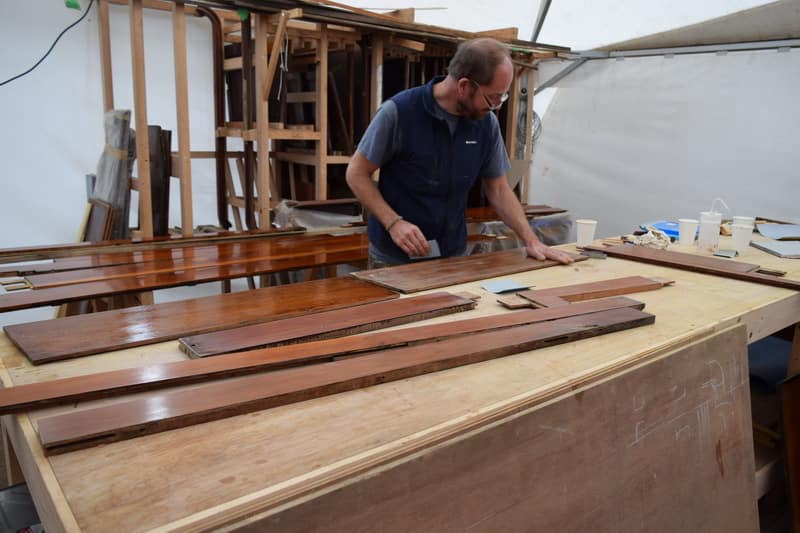
Lewis runs many tests to ensure that the color of the repaired interiors match with the original mahogany paneling.

The breath-taking results of the work on the capping rails by Mattis and Richard.
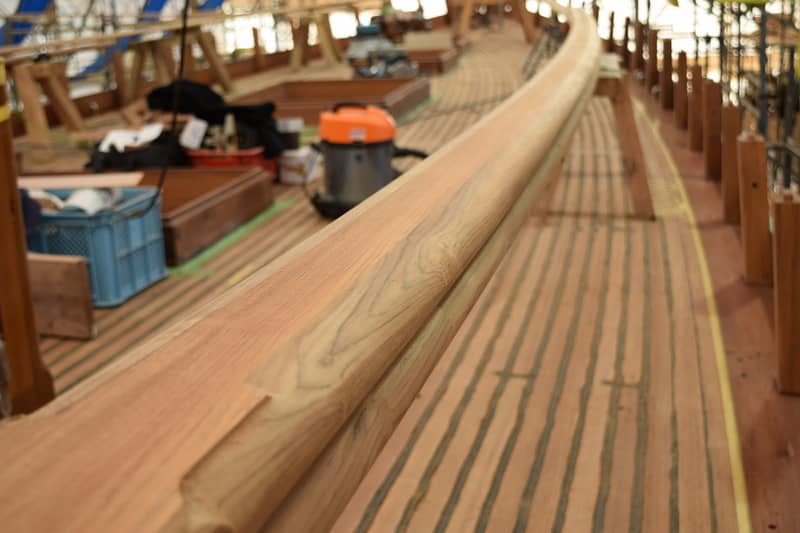
The beautiful curve of the capping rails.


